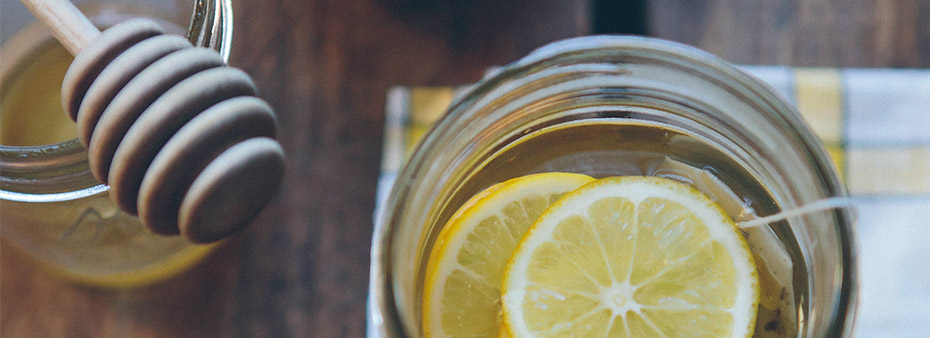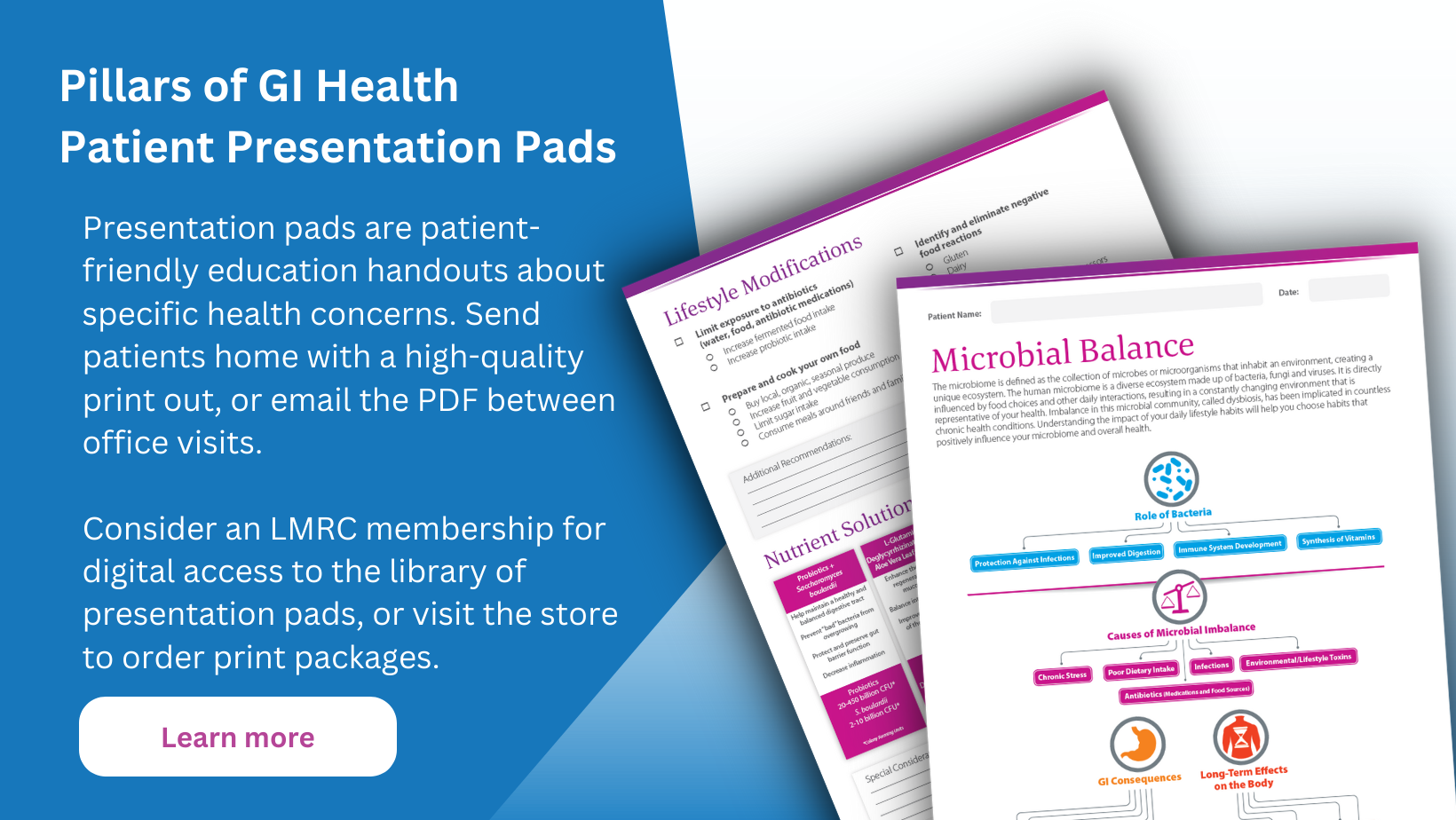There are many phytonutrients that have a bidirectional relationship with the gut microbiome. That is, the nutrient affects the types and/or metabolic activities of the gut microbiota, and the activities of the gut microbiota affect the bioactivity of the phytonutrient, typically through metabolism to more bioavailable and/or more bioactive compounds. The popular phytonutrient compound, berberine, is a classic example of this bidirectional relationship.
Historical Uses of Berberine
Berberine and related alkaloids have a long history of medicinal use in the various herbal traditions in both the East and West. These alkaloids are found in the roots, rhizomes, and stem bark of numerous plants, such as Berberis aquifolium (Oregon grape), Berberis vulgaris (barberry), Berberis aristata (tree turmeric), Hydrastis canadensis (goldenseal), Xanthorhiza simplicissima (yellowroot), and Coptis chinensis (Chinese goldthread, the most common source for commercial berberine HCl/sulfate ingredients). Historically, berberine is most noted for its antimicrobial, antifungal, and immune enhancing properties, though more recent research has evaluated berberine’s therapeutic potential for diabetes, cardiovascular diseases and cancer.2,3,4,5,6,7
Berberine has long been recognized as having microbial-modifying activities, properties that have historically been described as exclusively “antimicrobial.” Because of this, there has been some concern that berberine’s microbe-altering effects could negatively impact metabolic function by negatively affecting the gut microbiota. On the contrary, emerging research now suggests the opposite: that berberine therapy may create a more metabolically favorable microbiome and, furthermore, berberine’s activity relies upon commensal organisms to improve its bioavailability.8
Berberine Modulates Gut Microbiota
Research in rats fed a high-fat diet (HFD) shows that the prevention of obesity and insulin resistance driven by berberine supplementation is partly mediated by structural modification of the gut microbiota, which helps to alleviate inflammation by reducing exogenous antigen load in the host and elevates short-chain fatty acid levels in the intestine.9 Berberine increased Akkermansia spp. abundance in HFD-fed ApoE-knockout mice, decreased HFD-induced metabolic endotoxemia, lowered arterial and intestinal expression of proinflammatory cytokines and chemokines, increased thickness of the colonic mucus layer, and increased intestinal expression of tight junction proteins (related to restoring the gut barrier integrity).10 Additionally, in these HFD-fed ApoE-knockout mice, berberine treatment significantly reduced atherosclerosis.
As many now know, metformin has similar modulating effects on the microbiome, also increasing the abundance of beneficial commensal organisms Akkermansia spp.11 In fact, berberine and metformin have been shown to similarly shift the gut microbiota in animal models.12 Interestingly, in HFD-fed rats supplemented with berberine or metformin, the diversity of the gut microbiota was significantly decreased by both metformin and berberine treatment; while both increased SCFA-producing bacteria (berberine increasing the SCFA-producing bacteria to a greater extent than metformin). Berberine treatment has been shown to promote the production of butyrate in the gut microbiota, which may account for its effect on blood lipids and glucose. Importantly, pretreatment of animals with antibiotics abolished the effect of berberine on butyrate production.13
Berberine is Transformed by the Gut Microbiota
The composition of the gut microbiota (and their enzymatic capacity) also influences the transformation of berberine, which has poor natural bioavailability, into a more intestinal-absorbable form.14 In animal models, nitroreductases (NR) produced by gut bacteria were shown to reduce berberine to dihydroberberine (dhBBR), which has an intestinal absorption rate five-fold greater than berberine in host animals. After absorption, dhBBR is oxidized back to berberine, which then enters the bloodstream. When animals are given antibiotics, the conversion of berberine to dhBBR is greatly reduced, resulting in significantly lower blood berberine concentrations (and reduced levels of lipid- and glucose-lowering outcomes).
Human studies have clearly shown that individual gut microbiome differences predictably determine differences in the metabolism and absorption of berberine.15 Interestingly, studies in animals and humans show that subjects with dyslipidemia have greater microbiome nitroreductase activity and higher serum berberine levels after oral administration.16 This suggests that berberine’s activities may be preferentially greater in these subjects (or that measuring NR activity as a defining metabolic phenotype in patients may serve as a future biomarker for the personalized treatment of hyperlipidemia with berberine). Since berberine modulates the microbiota over time, it is not currently known how the long-term intake of berberine would affect microbiome NR activity.
The Bottom Line
Beyond berberine, the bidirectional relationship between phytonutrients and gut microbiota of the host is emerging as an important phenomenon for understanding the therapeutic role of plant-derived medicinal compounds.17 Therefore, as research continues to evaluate the therapeutic potential of hundreds of phytochemical compounds, the gut microbiota of the individual consuming these compounds (orally) must be considered as a major factor in understanding its therapeutic benefits. In addition, the interaction with the gut microbiota may also help explain why some phytochemical compounds have profound therapeutic effects while being poorly bioavailable.18

Thomas G. Guilliams, PhD
Thomas G. Guilliams, PhD (Tom) earned his doctorate in molecular immunology from the Medical College of Wisconsin in Milwaukee. For the past two decades, he has spent his time investigating the mechanisms and actions of lifestyle and nutrient-based therapies, and is an expert in the therapeutic uses of dietary supplements. Tom serves as an adjunct assistant professor at the University of Wisconsin School of Pharmacy and was the VP of Science for Ortho Molecular Products for 24 years (he now serves them as a consultant). Since 2014 he has been writing a series of teaching manuals (Road Maps) that outline and evaluate the evidence for the principles and protocols that are fundamental to the functional and integrative medical community. He is the founder and director of the Point Institute, an independent research and publishing organization that facilitates the distribution of his many publications. A frequent guest-speaker, Dr. Guilliams provides training to a variety of health care disciplines in the use of lifestyle and natural medicines. He lives in the woods outside of Stevens Point, Wisconsin with his wife and children.
References
- Kumar A, Ekavali, Chopra K, et al. Current knowledge and pharmacological profile of berberine: An update. Eur J Pharmacol. 2015 Aug 15;761:288-97.
- Hwang BY, Roberts SK et al. Antimicrobial constituents from goldenseal (the Rhizomes of Hydrastis canadensis) against selected oral pathogens. Planta Med. 2003; 69(7):623-7.
- Slobodnikova L, Kost'alova D et al. Antimicrobial activity of Mahonia aquifolium crude extract and its major isolated alkaloids. Phytother Res. 2004; 18(8):674-6.
- Kuo CL, Chi CW, Liu TY. The anti-inflammatory potential of berberine in vitro and in vivo. Cancer Lett. 2004; 203(2):127-37.
- Cicero A, Baggioni A. Berberine and Its Role in Chronic Disease. Adv Exp Med Biol. 2016;928:27-45.
- Liu D, Meng X, Wu D, et al. A Natural Isoquinoline Alkaloid With Antitumor Activity: Studies of the Biological Activities of Berberine. Front Pharmacol. 2019 Feb 14;10:9.
- Neag MA, Mocan A, Echeverría J, et al. Berberine: Botanical Occurrence, Traditional Uses, Extraction Methods, and Relevance in Cardiovascular, Metabolic, Hepatic, and Renal Disorders. Front Pharmacol. 2018 Aug 21;9:557.
- Habtemariam S. Berberine pharmacology and the gut microbiota: A hidden therapeutic link. Pharmacol Res. 2020 May;155:104722.
- Zhang X, Zhao Y, Zhang M, et al. Structural changes of gut microbiota during berberine-mediated prevention of obesity and insulin resistance in high-fat diet-fed rats. PLoS One. 2012;7(8):e42529. doi: 10.1371/journal.pone.0042529. [Epub 2012 Aug 3].
- Zhu L, Zhang D, Zhu H, et al. Berberine treatment increases Akkermansia in the gut and improves high-fat diet-induced atherosclerosis in Apoe-/- mice. Atherosclerosis. 2018 Jan;268:117-126.
- Shin NR, Lee JC, Lee HY, Kim MS, et al. An increase in the Akkermansia spp. population induced by metformin treatment improves glucose homeostasis in diet-induced obese mice. Gut. 2014 May;63(5):727-35.
- Zhang X, Zhao Y, Xu J, et al. Modulation of gut microbiota by berberine and metformin during the treatment of high-fat diet-induced obesity in rats. Sci Rep. 2015 Sep 23;5:14405.
- Wang Y, Shou JW, Li XY, et al. Berberine-induced bioactive metabolites of the gut microbiota improve energy metabolism. Metabolism. 2017 May;70:72-84.
- Feng R, Shou JW, Zhao ZX, et al. Transforming berberine into its intestine-absorbable form by the gut microbiota. Sci Rep. 2015 Jul 15;5:12155.
- Alolga RN, Fan Y, Chen Z, et al. Significant pharmacokinetic differences of berberine are attributable to variations in gut microbiota between Africans and Chinese. Sci Rep. 2016 Jun 10;6:27671.
- Wang Y, Tong Q, Shou JW, et al. Gut Microbiota-Mediated Personalized Treatment of Hyperlipidemia Using Berberine. Theranostics. 2017 Jun 24;7(9):2443-2451.
- Dey P. Gut microbiota in phytopharmacology: A comprehensive overview of concepts, reciprocal interactions, biotransformations and mode of actions. Pharmacol Res. 2019 Sep;147:104367.
- Chen F, Wen Q, Jiang J, et al. Could the gut microbiota reconcile the oral bioavailability conundrum of traditional herbs? J Ethnopharmacol. 2016;179:253-264.



.jpg)


